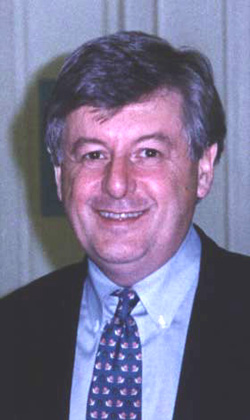Professor Paul H. Frampton
The NewScientist article New universes will be born from ours said
“What gruesome fate awaits our universe? Some physicists have argued that it is doomed to be ripped apart by runaway dark energy, while others think it is bouncing through an endless series of big bangs and big crunches. Now these two ideas are being combined to create another option, in which our universe ultimately shatters into billions of pieces, with each shard growing into a whole new universe. The model could solve the mystery of why our early universe was surprisingly well ordered.The answer may be tied up with the way that universes are created and destroyed. The fate of the universe depends on how dark energy — the force thought to be driving the accelerated expansion of our universe — changes with time. If it increases without limit, it will eventually tear everything apart, destroying the universe in an event called the big rip. Now physicists Lauris Baum and Paul Frampton at the University of North Carolina in Chapel Hill are invoking this effect to explain how the entropy of our early universe might have been kept in check.
In their model, dark energy becomes very dense and sets the universe expanding at such a rate that it approaches the big rip. The universe tears into small patches that rush away from each other faster than the speed of light. But the destruction is then halted, as the density of dark energy becomes equal to the density of the universe. At this point, each patch crunches in on itself. ‘All the patches, of which there are a huge number, will separately contract into disparate universes,’ says Frampton. Each patch will then bounce outwards again, creating a new universe.”
Professor Paul H. Frampton is Rubin Professor, Department of Physics and Astronomy, University of North Carolina. His research focuses on model building in cosmology and high-energy physics and is the author of over 350 scientific articles.
Paul was the author of the first ever book on string theory in 1974 when it was still known by the name dual resonance models and followed that with a 1986 monograph on gauge field theories. In quantum field theory he provided in 1976 the first correct calculation for vacuum decay then in 1983 he participated in the earliest calculation of an anomaly pertinent to the chiral ten dimensional superstring. He has worked at both CERN and Harvard University.
He authored Dual Resonance Models and Superstrings, Gauge Field Theories, 2nd Edition, On Cyclic Universes, Proton Decay in Teravolt Unification, Darwin and Phenomenology Beyond the Standard Model, and Dark Energy — a Pedagogic Review, and coauthored First Workshop on Grand Unification: New England Center, University of New Hampshire, Group Theoretic Bases for Tribimaximal Mixing, Deflation at Turnaround for Oscillatory Cosmology, Chiral Fermions and Quadratic Divergences, and Primordial Black Holes, Hawking Radiation and the Early Universe. Read his full list of publications!
Paul earned a B.A. from the University of Oxford in 1965, a M.A. from the University of Oxford in 1968, a D. Phil from the University of Oxford in 1968, and a DSc from the University of Oxford in 1984. He became a Fellow of the American Physical Society in 1981, a Fellow of the British Institute of Physics in 1986, and a Fellow of the American Association for the Advancement of Science in 1990.
